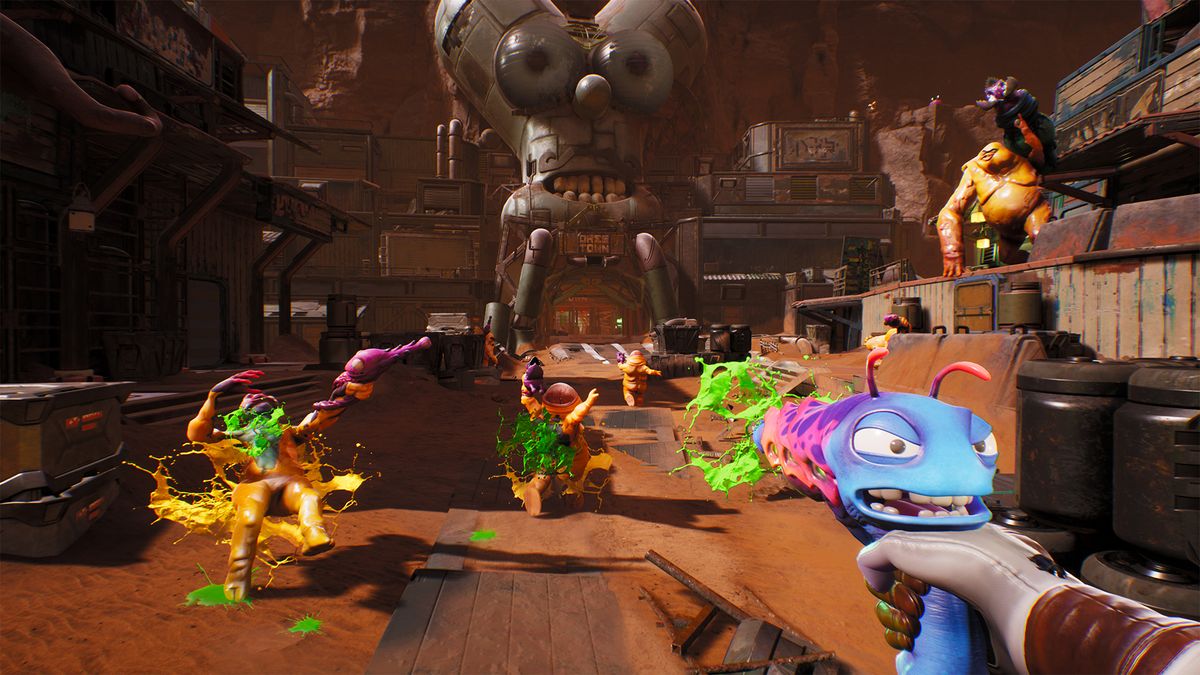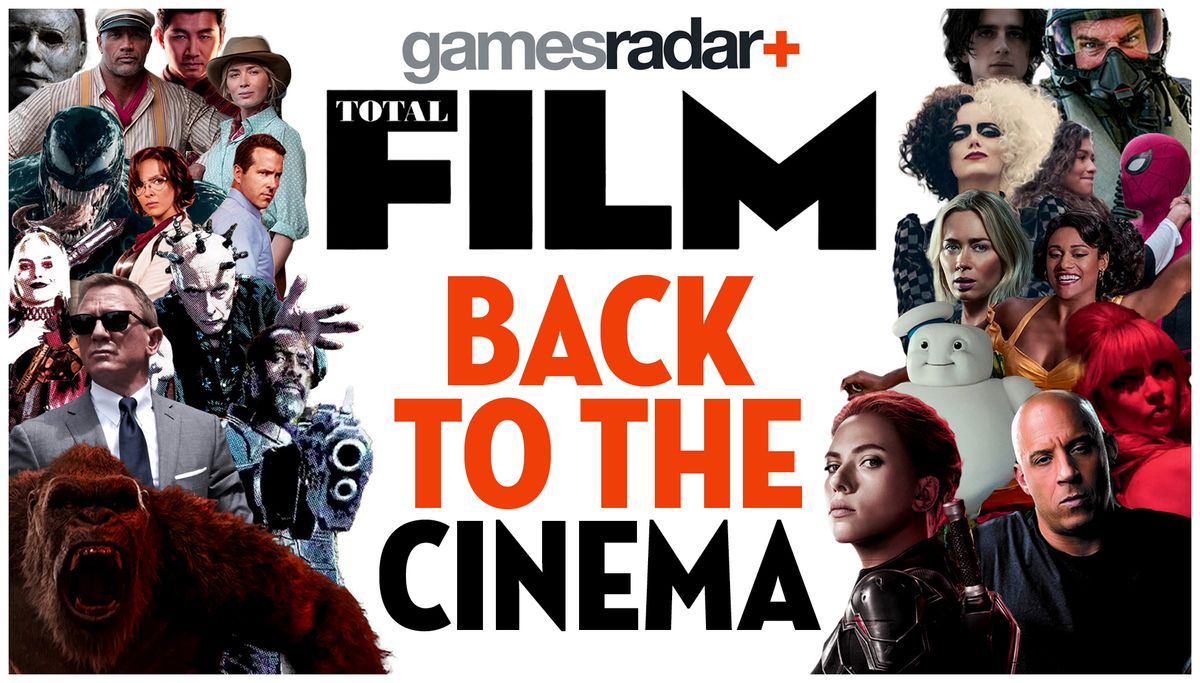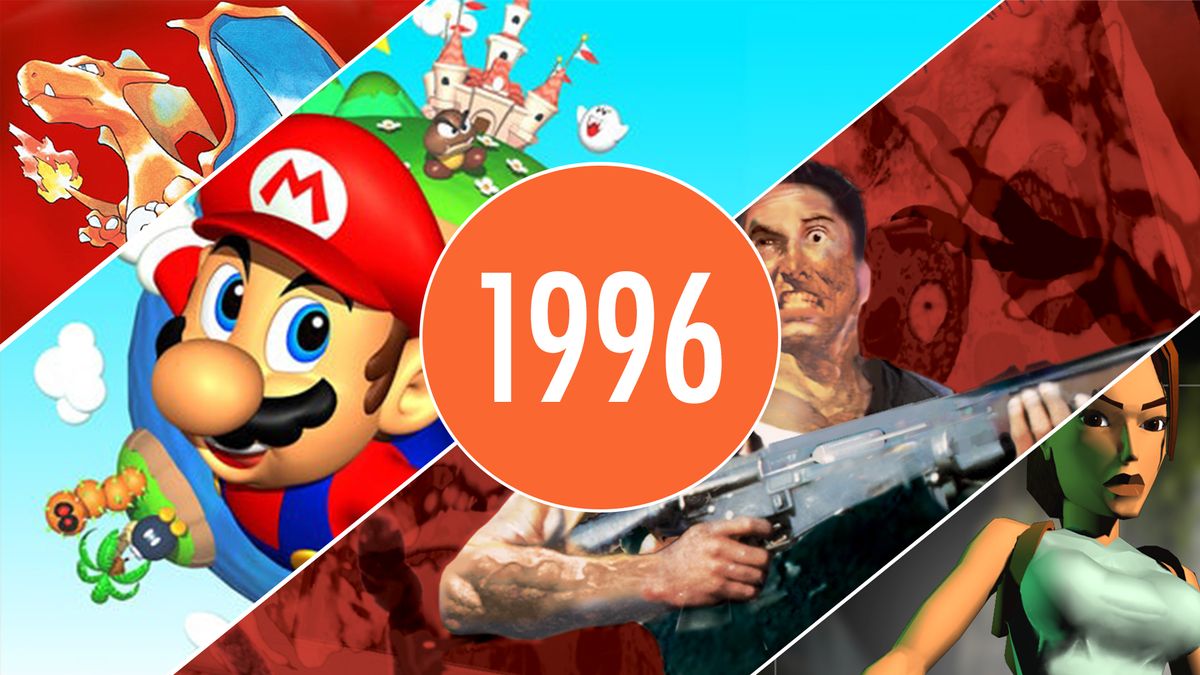There’s nothing more relaxing of an evening than curling up by the fire with a nice hot cup of cocoa, quiet except for the noise of jazz crackling away on the record player, and the visceral sound of Nazis being shot in the head. So we’re happy we’re getting another chance to do so in Wolfenstein: The Old Blood, the follow up to The New Order (opens in new tab). So happy that we caught up with The New Order creative director Jens Matthies to find out how they made the original, the subtleties of evil and why it’s good to go OTT.

You’ve got one of the best console shooters on new-gen consoles – how does that reflect on you within [parent company] Bethesda? Do you now have more control, or do you have more freedom with what you do next?
I think with Bethesda, it already gives us so much freedom we can’t really get any more! But it’s amazing to work within this company because it’s very, very quality-orientated. And to get that quality, of course, you have to have developers who are passionate about what they’re doing – so we’re given an extreme amount of freedom with the games we make.
What do you think was the biggest creative risk that you took?
That’s very hard to answer, because in one way you could say we let the Nazis win the war and moved the timeline forward to the ’60s – that’s a very big move. Once you do that, the future of the franchise is forever altered, you know? It’s always been a World War II-era game, so obviously that’s a big risk. But you could also say that going single-player only could be considered a risk, as is the broadening of its scope so that it’s much more of an action-adventure than it is a shooter or the fact that it has a lot of story components. There’s risk in all of those things if you want to look at it from a risk-mitigation perspective. But fortunately there’s nobody in this company that does that. We only look at what we think will make the game as good as possible. And that’s what we’ve tried to achieve.

Did you always intend it to be this mixture of quite serious and moving at times, and funny and over-the-top in others? We were very struck by that…
Yeah! We loved that contrast and juxtaposition. I think it’s fundamental that no matter how serious your game is, it is also incredibly over-the-top, especially in the first-person shooter genre. We love the contrast of an OTT premise and really domestic, intimate situations – that contrast we think is really powerful, and we worked a lot on that in all aspects of the game.
Talking of domestic and personal, you’ve got some great first-person exchanges, like that bit in the train carriage with the Fräulein and she spots you and you don’t know whether or not she’s worked out who you are. That reminded us of Inglourious Basterds…
Inglourious Basterds is a great example of walking that balance, because on the one hand you have the people hiding under the floorboards and the scene is extremely tense – and on the other hand they shoot Hitler in the face and it’s just crazy. But I wouldn’t say that’s the only example of that. Another big inspiration for us is things like the original 1987 Robocop, which is an amazing piece of fiction. It’s thematically interesting and the plot is super-tight, with really cool characters – and of course, it’s completely over-the-top, too. But it’s also really resonant. And it’s funny at times – with Wolfenstein: The New Order we tried to capture the same sort of tone, so we feel like we’re in good company.

How difficult is it to make jokes about the Nazis in particular? They’re quite a touchy subject…
Whatever we did, we felt like we needed to treat the Nazis seriously. We didn’t want to cartoon-ify them, even though they’re from this larger-than-life canvas full of really crazy over-the-top characters – like, we’ve got a character called Deathshead, you know? But underneath that, we wanted it to be propelled by something that felt like an authentic Nazi enemy movement. And that’s also the reason why we let all the Nazis speak German in the game, for example.
And of course, to make you appreciate the horror of the Nazis properly, it’s not enough that the root causes of their behaviour are based on Nazi ideology – it’s also important that you show that they are human beings in some aspects. In everything they do – and this really goes for every character you meet in the game – everything is channelled through their humanity and trying to find that in them and bring that out.
That is something that lots of games get wrong – they do kind of cartoon-ify the Nazis…
Yeah, and I can see where the temptation for that is, but I think that’s a disservice… because in some ways, it’s easy to assume that Nazis are just evil and people know this like it’s a fact of life, but until you’ve experienced it, you don’t really know what that is about, so we’re hoping to give you some of that experience with the game. Because I think that’s also unique to the medium – it really can put you on the receiving end of something in a way that other media can’t.

Within Bethesda you guys are pretty hot with the id Tech 5 engine. Is there much pressure for you to share your knowledge with other teams and maybe talk to id Software about what you’ve learned?
Yeah, it’s not that it’s pressure – it’s that we love doing that, so we do it as much as we can. It’s weird, too, because all game studios tend to be pretty isolated, and they all tend to develop their own pipelines or whatever and their own ways of working, but we love the fact that there are now several really capable studios within the same organisation and we can share information, and we can help each other out. It’s a constant process of trying to do more on that, because everybody wants to do that and they love doing that.
Do you have any particular insights into getting 1080p and 60fps on Xbox One? It’s something that obviously our readers ask for a lot, and you guys have managed it with a rather graphically rich game. Was that difficult?
Yeah, well… if you want a high framerate, it’s always difficult – especially if you’re doing really complex environments. For example, [Wolfenstein’s] Chapter 12 is on this bridge that’s completely torn apart and destroyed, and there’s a whole lot of complex geometry there. There are positions where you can stand and you can see the whole bridge. So in those circumstances, it can be challenging to make everything work – but we always made it work somehow. And then, of course, you have peaks if you have lots of explosions and lots of things occurring on-screen at the same time, but we always knew that it was going to be 60 frames per second, so we worked to a target.

I’m always fascinated to see developers work limitations into game design – like in Dead Space, where they have the elaborate doors to disguise the loading times.
Yeah, we should have probably done a little bit more of that!
Like some really complicated Nazi doors…
(Laughs) Yeah, you have to monitor that, because oftentimes [the delays are] from specific vantage points during specific activities. That’s when you have a problem and you have to identify where those spots are and address them. But the engine is so f**king fast, you know? (Laughs) We rarely have that problem.
Click here for more excellent Official Xbox Magazine articles. Or maybe you want to take advantage of some great offers on magazine subscriptions? You can find them here.
 Game News Video Games Reviews & News
Game News Video Games Reviews & News



